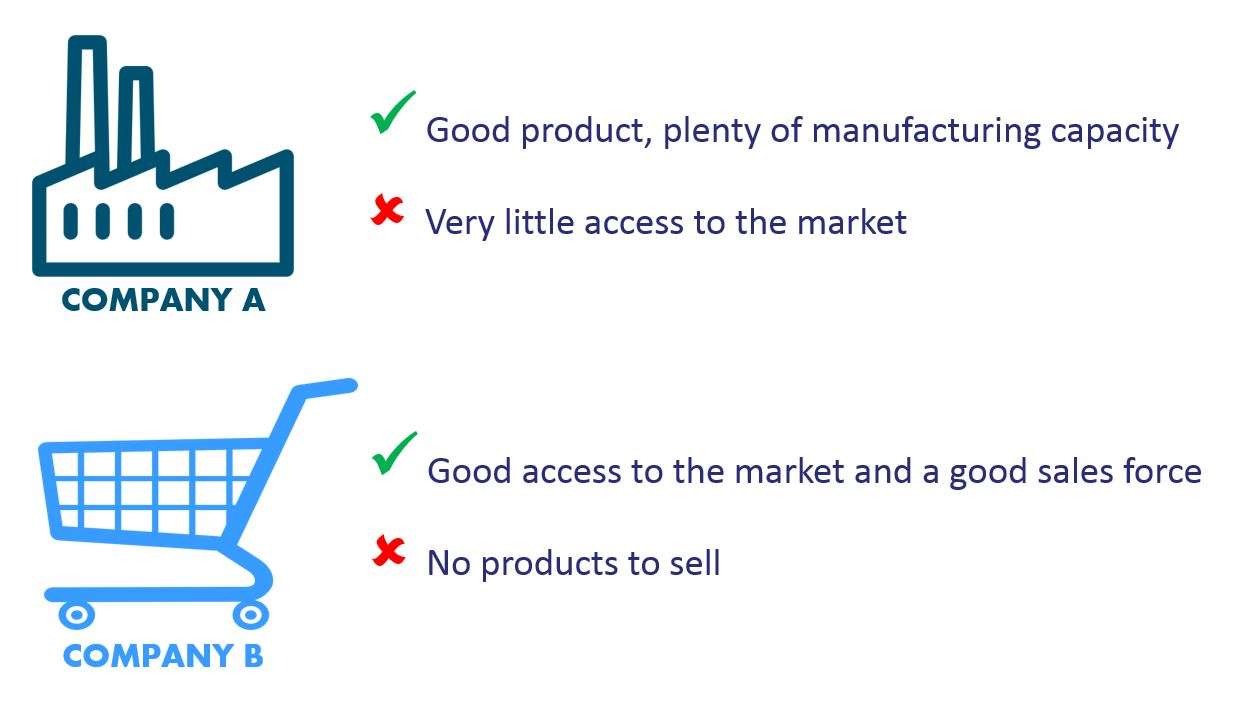Who Benefits from Customer Success Management?
In short, both the customer initially and ultimately the CSM’s own company as well are beneficiaries of customer success management. These two beneficiaries could be looked on as being direct and indirect beneficiaries respectively, in the sense that the majority of what the CSM actually does is directly related to benefitting the customer’s organization through the processes of understanding and planning for and then actually undergoing the onboarding and adoption of and the value realization from whatever products and services they have purchased from the CSM’s company. In this way, the customer gains direct benefits from this action.
Meantime of course, the CSM’s own company is indirectly benefitting from these actions too, through improved relations with the customer, a deeper understanding of the customer’s needs and desires, and most importantly of all, a greater level of proven value returned to the customer from that company’s solutions that in turn means an increased likelihood of the customer renewing services contracts and/or buying more of the same products and services and/or buying new and additional products and services.
Customer Success Management as a Sales and Marketing Feature
I would suggest that this “dual benefit” or “win-win” concept of extending assistance to customers to help them achieve their outcomes and in so doing winning more business from them is one of the central themes or even “philosophies” behind customer success management. Companies who believe fully in this philosophy are likely to embrace customer success management and look to it to enhance the value of their offerings to customers and in so doing both to win more business from existing customers but also simply to win more customers too. How can customer success help a business to win new customers? Surely CS only kicks in after the solution has been sold and when the engagement reaches the stage where the customer needs to onboard and adopt that solution, right? Well yes that’s true, but in fact I do think that these days customers expect much more from their chosen suppliers than just the product or service itself – especially in situations where what has been sold is a complex solution that will involve considerable effort to onboard, adopt and ultimately to generate value from, and particularly when the costs involved are considerable and the potential values returned are also considerable.
“Customers expect much more from their chosen suppliers than just the product or service itself”
In this situation, decision makers within the customer organization will of course need to consider the various qualities of the solution itself – things like the quality of the solution’s components, the level of flexibility or customization available to them, how easily the solution will integrate with the customer organization’s existing systems and processes, how easy it is to operate, how expensive it is to run and maintain, the availability of replacement parts (if relevant) and the availability of either personnel with existing skills to recruit into the business to help manage and/or use the solution, or the availability of training and if necessary certification to upskill existing personnel as needed, and so on.
And within this mix of considerations is now another consideration, and one which I believe is increasingly important. Alongside the features, functions and qualities of whatever it is that the customer is purchasing, I believe that customers who are making more complex purchases are also increasingly asking themselves not just “is this the right solution for us?” but also “is this the right supplier for us?”. Customers increasingly want to know not just that the product or service does what it needs to do, but that the supplier of that product or service will not simply sell it and walk away, but will partner with the customer to help them gain the maximum possible value from that product or service. So the question moves from “is the solution right for us?” to “is both the solution and the company that provides it right for us?”. And therefore, when making the purchasing decision, potential customers are looking not just at the products and services themselves, but at the full range of value added services that the supplier offers alongside those products and services, which these days will include the quality of the customer success management services that the supplier can offer alongside everything else.
What’s Truly New is the Partnering Approach
Of course this is not in and of itself a new phenomenon – customers have been selecting the right supplier to help them with practical considerations such as customization and/or configuration work, the implementation of the solution and maybe also the ongoing management and maintenance of it too for many years. But generally speaking the more business related side of things has traditionally been pretty much the soul responsibility of the purchaser rather than the supplier. It may have been up to the supplier and customer working together to select the “right” solution components, to get those components up and running and working, and maybe even to keep them running and working on an ongoing basis if maintenance, management and support was a part of the package. But in terms of the value generated from those solution components… well that was solely the responsibility of the customer. Until now.
The bottom line then is this. If done well, customer success management turns everything around on its head a full 1800. It turns a company that used to sell products and services into a company that sells results. It even turns a company that used to “sell stuff to customers” into a company that “goes into business with partners” instead. Do I mean that literally? Well, maybe not entirely, although I do think that it’s the direction of travel in which we are headed. But even if it’s not a literal partnership from a technical or legal perspective, the relationship between buyer and supplier is increasingly looking like and acting like the relationship between partner and partner, and customer success management to my mind is the driving force of this changing nature of the relationship.
The way in which this happens is in the increased responsibility that suppliers are now taking on for not just the product or service itself, but for the results generated from that product or service. To illustrate this, let’s think about how a traditional partnership works for a moment. Let’s say that Company A has a great product and plenty of manufacturing capacity, but very little access to the market to sell that product to customers, whereas Company B has fantastic access to this market and a really good sales force, but doesn’t have anything to sell.
Maybe Companies A and B can get together and form a partnership where Company A does the manufacturing, Company B does the selling and they split the profits equally between them. The partnership is a win-win for both companies, since both companies are now doing what they happen to be both good at and well positioned to be able to do, and equally are benefitting from the other company – their partner – handling the things that they are not good at and/or are not well positioned to be able to do.
In this scenario, each partner selected the other one on the basis of what that other company was good at and able to do that they themselves were not good at or able to do. This plugged the gaps in their own capabilities to provide them with a business opportunity which neither company on its own would otherwise have. The business opportunity could then be exploited and the value returned from doing so shared between the two partners.
Does this situation exist in the real world? Yes it most definitely does. Take Ebay as an example.
Ebay has a fantastic reach to millions of customers, and all the Ebay suppliers have products that those customers might potentially want to purchase. Ebay would struggle to survive if it didn’t have any suppliers selling their products on its platform, and likewise many of those suppliers would struggle to survive without access to that platform’s customers for them to sell their products to.
So now let’s think about how this works with customer success management and the “1800 turn” that we were discussing a few minutes ago. Whereas prior to customer success the message to customers may have been something along the lines of “buy our products and services, they’re really good”, the new message to customers might be “partner with us and we’ll help you generate the value you need”. Instead of asking our customers “what product do you want?” with customer success management in place we can start to confidently ask them “what outcomes are you looking for?”. And therefore instead of selling them a solution, we can sell them an end result. An end result that both the customer and now the supplier is invested in and one in which in a very real way the supplier is also rewarded for when it is achieved, since the customer’s attainment of value implies that the customer will renew the service contract and/or buy further products and services as relevant.
Welcome to the “Shared Risk, Share Rewards” Model
Thus with customer success management in place, companies can start to act very differently towards customers, treating them as business partners and in doing so transferring some (indeed sometimes much) of the risk from the customer to the supplier and in turn some of the rewards from the supplier to the customer. In other words… a partnership in all but name. Both customer and supplier are now bound up in shared risk, since both are extending effort (and therefore expenditure) in making the initiative work, and both customer and supplier will receive a share of the rewards when the initiative starts to generate value. The customer will get whatever the customer was looking for in terms of outcomes from using the products and services supplied, and the supplier will get the benefit of being able to continue to sell its products and services to the customer.
This may seem like a trivial name change, but I promise you that what we’re discussing right here is very powerful for companies to grasp and to put to effect. In summary, the provision of customer success management services enables suppliers to effectively “go into business” with its customers and in so doing to generate new levels of value from this new and greater merging of capabilities from both organizations combined than could have been achieved before by either one company alone. Customer success therefore is a potential game changer for companies, in that it unlocks the door to going far deeper in terms of the relationship between buyer and supplier and turning that relationship into one of partner and partner.










